 Hello and welcome to a developer diary for the 1.10 Collie patch!
Hello and welcome to a developer diary for the 1.10 Collie patch!This is the patch that will be released alongside Battle for the Bosporus. Today we’re going to be focusing on some content coming with the patch that will add new content for owners of the Death or Dishonor expansion. Everything that follows will be accessible to DoD owners and will not be unlocked by purchasing Battle for the Bosporus. Some of you may already know this from the leaked screenshot on the Steam store, but Yugoslavia will be getting a light rework coming free with the patch for any owners of Death or Dishonor.
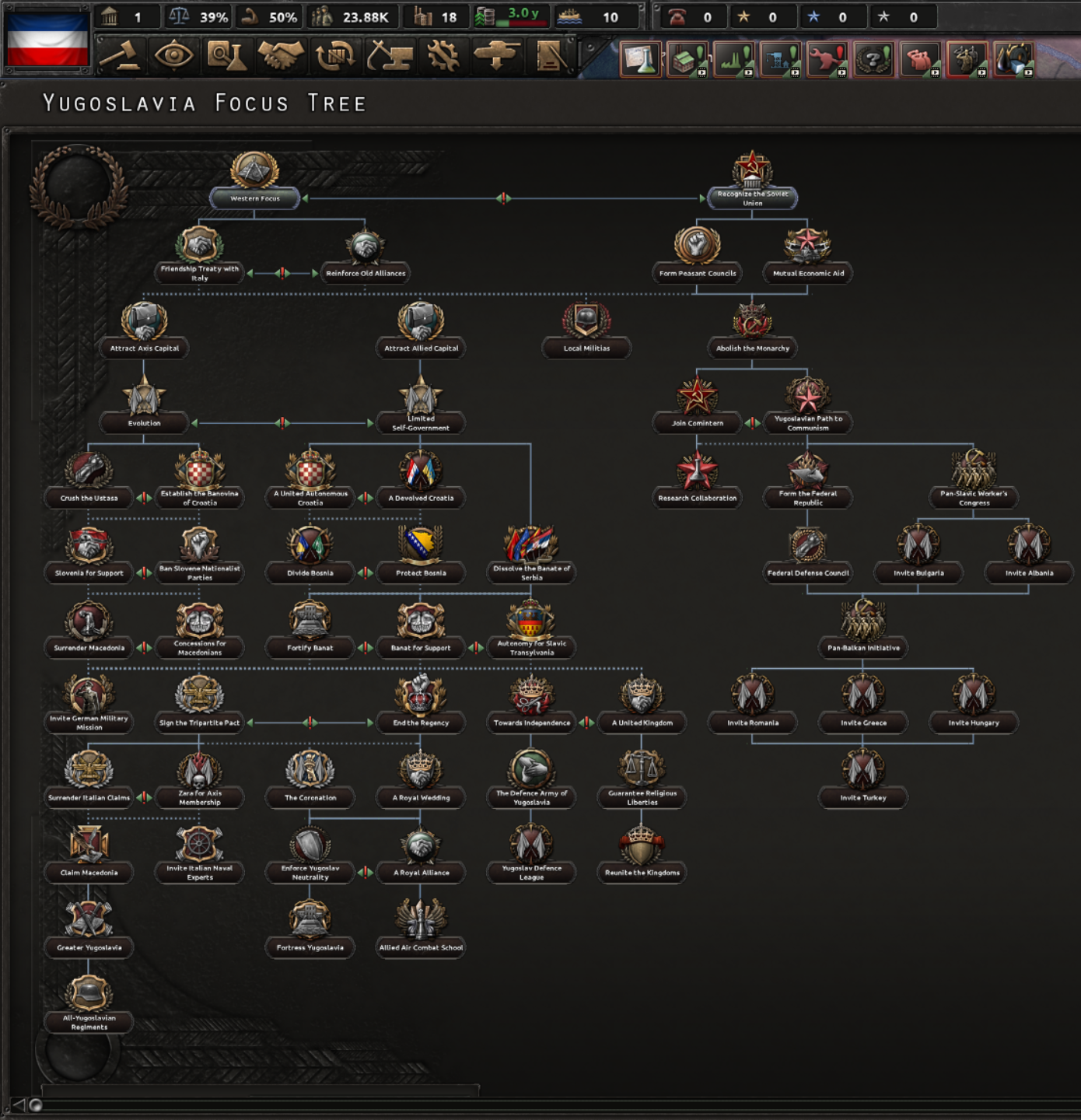
When I originally joined full-time on the project, I was given a list of common complaints from the community regarding the content in Death or Dishonor. Most of these issues were trivial, but none had a longer list of complaints than Yugoslavia so it seemed right that instead of attempting to stitch together a series of minimal low-visibility fixes, it would be best to do a partial rework of the Yugoslavia tree.
This is not quite to the scale of previous major reworks, however. The first draft of changes began as something I worked on out of my free time, so I wanted to keep scope low and avoid creating too much extra work on top of the existing BftB content while improving the overall quality of the Yugoslavia tree to give players more options to explore both history and alt-history.

Let’s begin with the communist focuses, which have seen a little change. For a long time, Yugoslavia was able to branch off and make its own faction with itself, Bulgaria, and Albania but the chances of getting those nations to become Communist in a regular playthrough was pretty dang low. So, Yugoslavia now gains access to a series of decisions to steadily support a peasant’s uprising in both Bulgaria and Albania, creating a viable way to bring them into the Pan-Slavic Worker’s Congress.
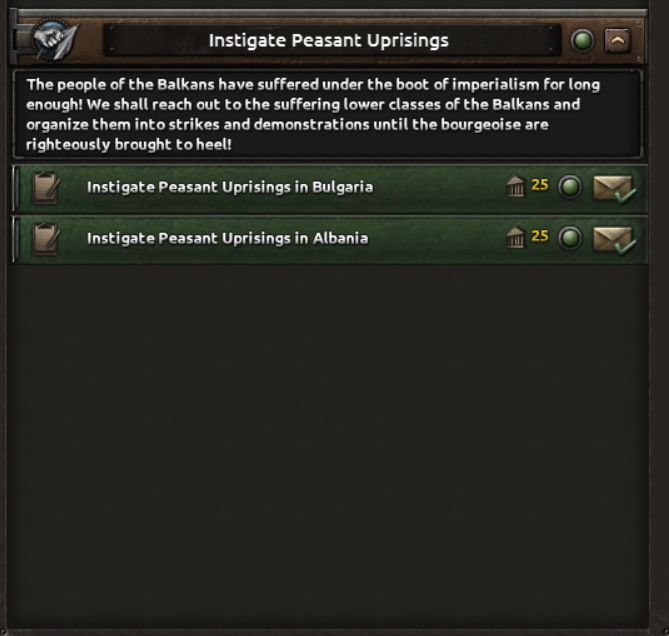
Once done, Yugoslavia will gain access to a whole slew of new focuses with their faction reorganizing into the Pan-Balkan Worker’s Congress. Romania, Turkey, Greece, and Hugnary are all valid targets for peasant uprisings, so if you ever wanted to see the Balkans start wearing purple, Tito now has all the tools to do it.
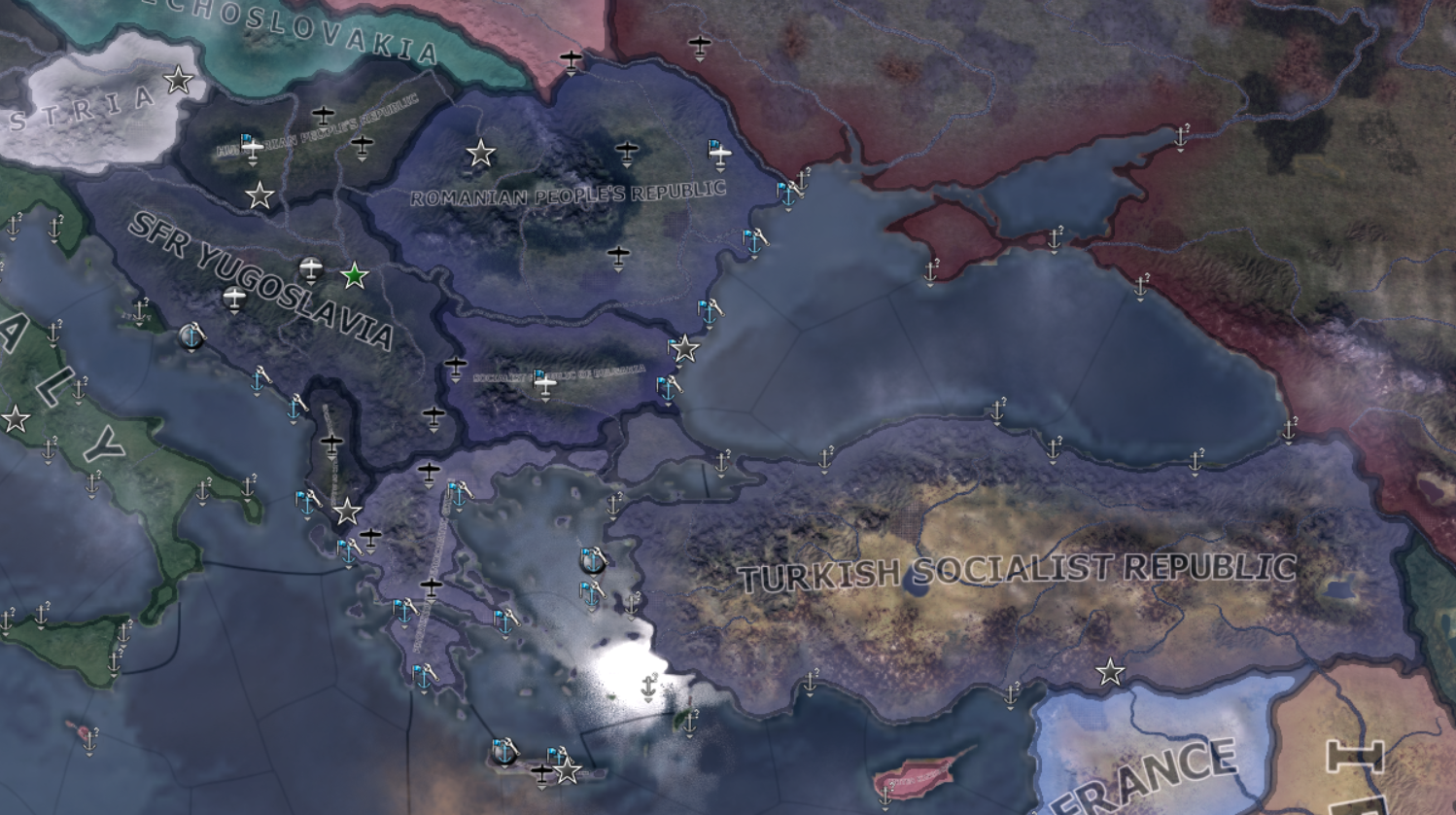
Next, we’ll take a look at the old monarchist focuses and how overall the decisions you made were pretty objectively one good decision and one bad. What I really liked about Yugoslavia was the fact that you were constantly making decisions with every focus you pick, following this kind of ladder-design, but with the new tree, I wanted to take that a step further and create some more meaningful and involved choices.
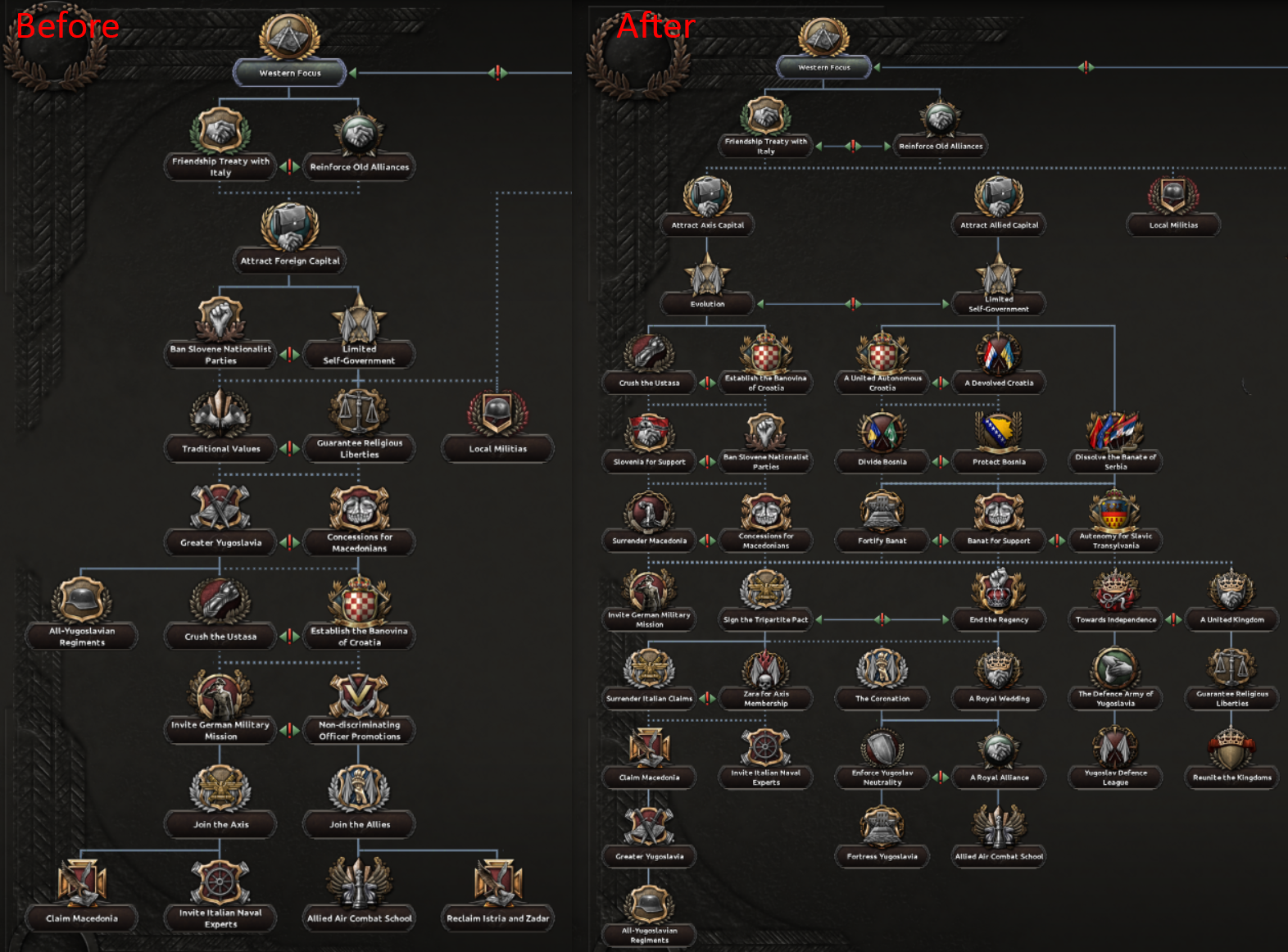
At the very start of their focus tree, Yugoslavia has a choice to either pursue Evolution or Limited Self-Government. Evolution is basically the old Yugoslavia design, where you attempt to stomp out nationalism in your country by whatever means you see fit.
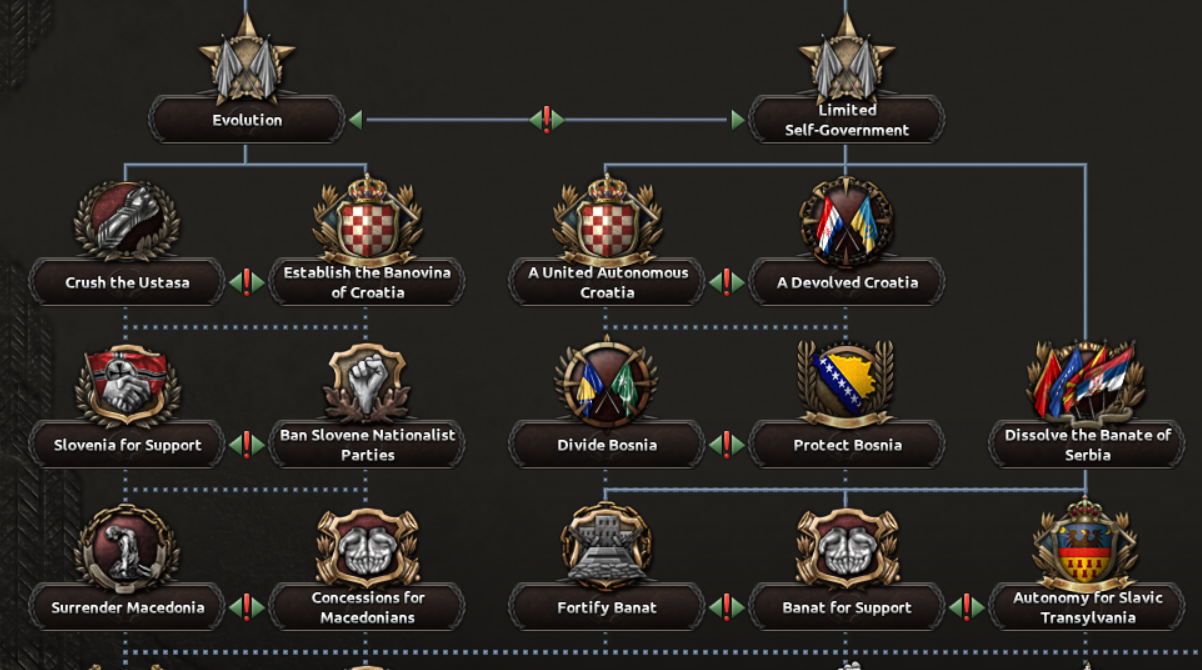
#
First, establishing the Banate of Croatia no longer makes Croatia a puppet and instead gives Yugoslavia a temporary softer version of Croatian Opposition, but choosing to Crush the Ustase is now a much more involved process and can result in Croatian Nationalism being removed entirely. Crushing the Ustase is a series of decisions tied to two missions. One mission will make the Ustase rise up in an independence war, and the other will peacefully stamp them out. Players have access to a number of decisions to either delay the uprising or speed up the peaceful removal of the Ustase and it’ll take a lot of close attention to keep Yugoslavia in one piece while stamping out nationalism.
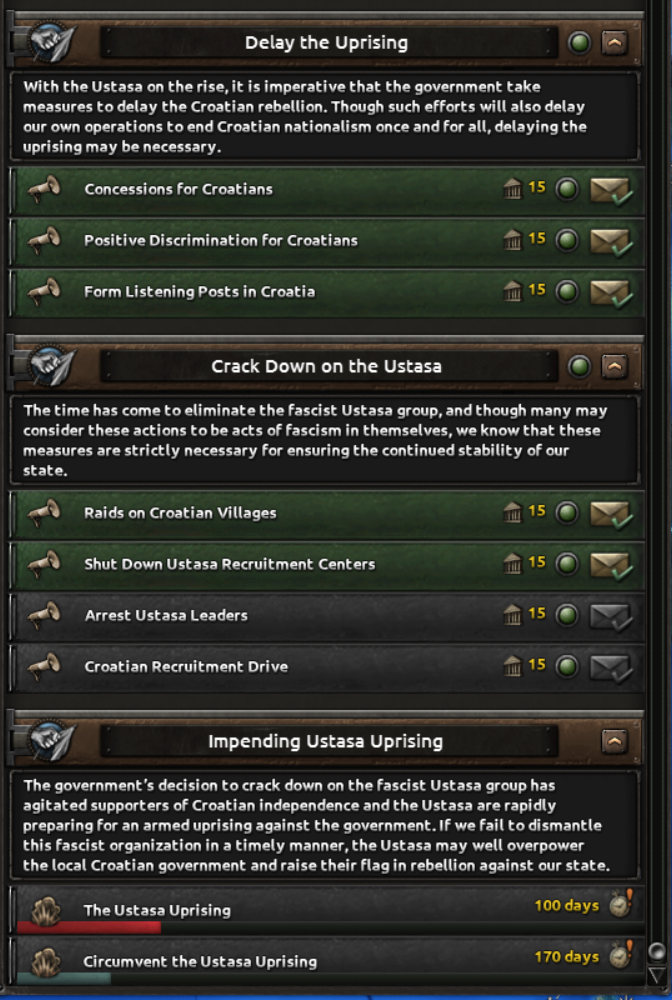
For the next two focuses, Yugoslavia has the option to both play appeasement to Italy and Bulgaria while also permanently removing some of their problems. The old focuses do what they always have, but now the negative spirit gained only lasts for a few years, but giving up the territories to these powers will now grant a significant increase in opinion while removing the spirits completely.
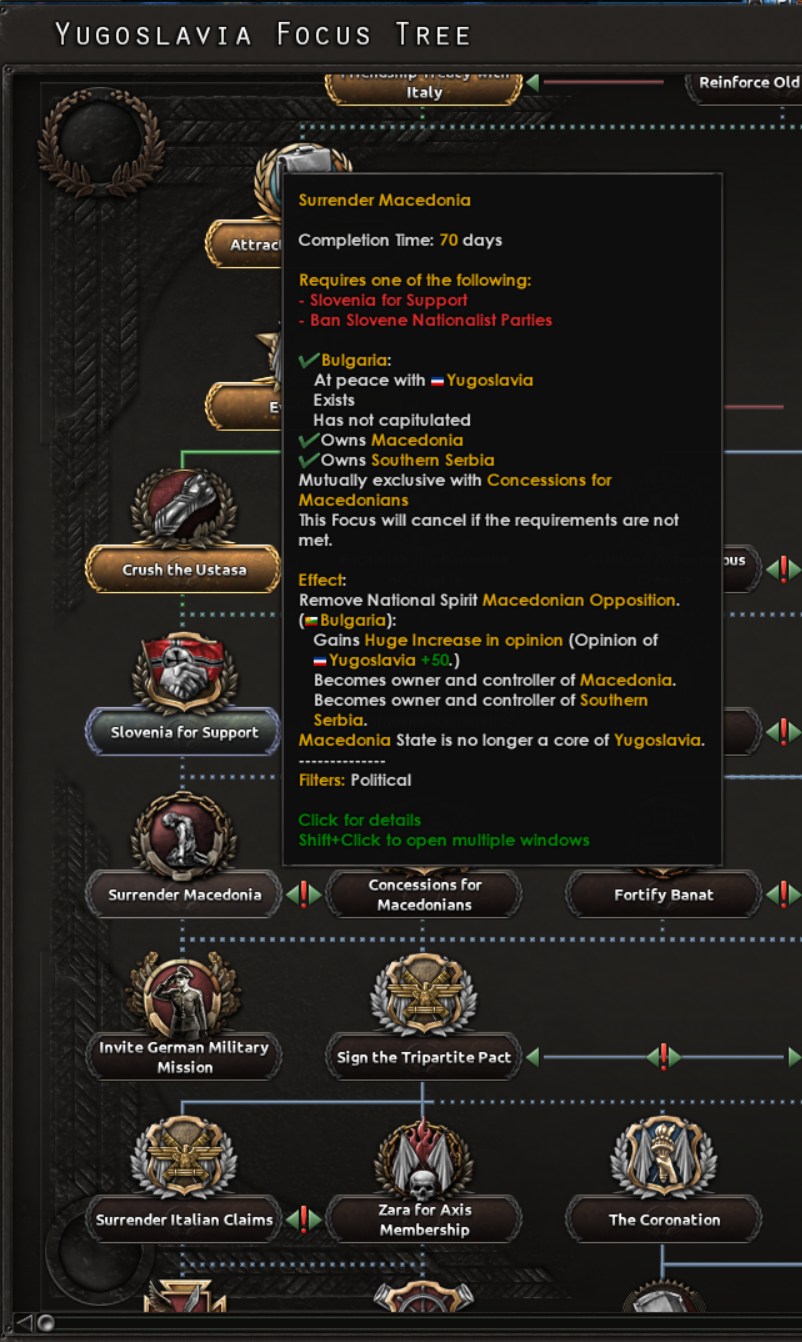
Now is as good a time as any to bring up the reworked Yugoslavian states! The goal of this state rework was to facilitate for both modern Balkan borders for the sake of releasables and historical occupation zones.

But instead of doing all that work to maintain the union, Yugoslavia can choose instead to grant self-government to its constituent parts, permanently removing the negative spirits at the cost of losing all of its territory besides Serbia proper. Throughout this path, Yugoslavia will get to choose exactly how it wants to devolve itself; should the two Banovinas of Croatia be individually independent or should they be merged into one? Should the contested territory of Vojvodina be fortified against the Hungarians, given up to them as an act of appeasement, or granted self-government? The ladder design here is more of a choice of how chaotic you want the Balkans to be than a strategic decision. Personally, I enjoy achieving peak-Balkans and granting autonomy to everyone.
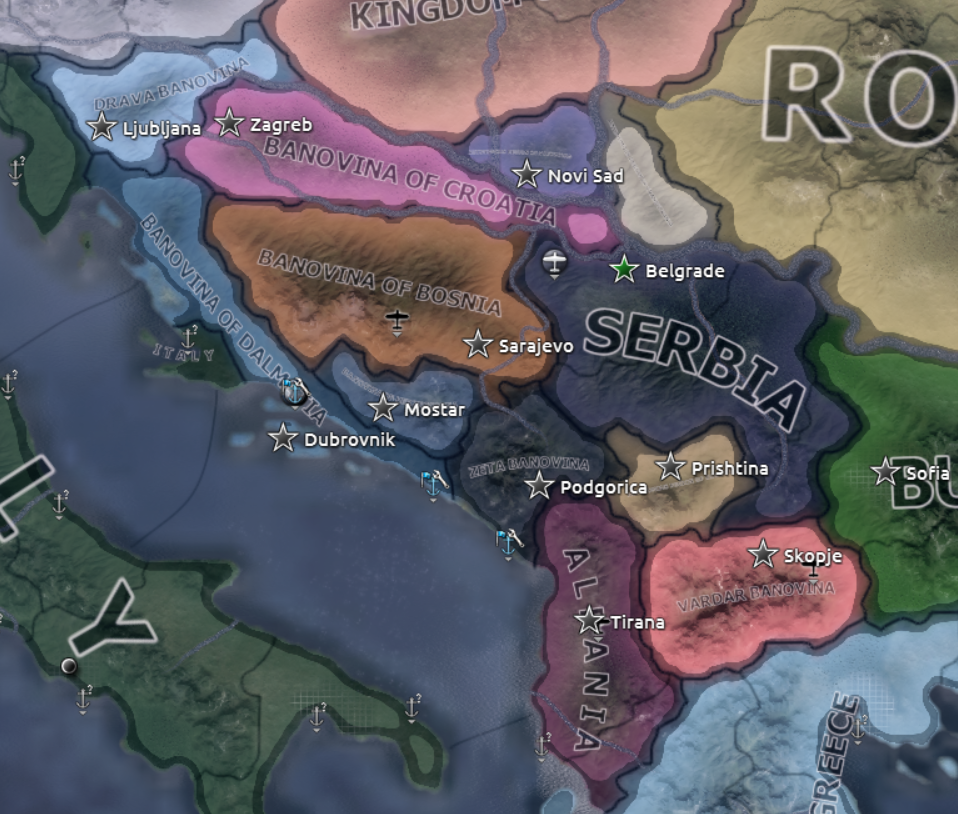
Once done tearing itself apart, Yugoslavia can attempt to reintegrate its constituent parts, or grant full independence to the Balkans, replacing Yugoslavia with a military alliance backed up by a hefty number of free units shared between each of the Balkan nations. Going down the route of independence, the Balkans will have more than double the number of troops Yugoslavia begins the game with, so breaking yourself apart may not be such a bad decision with the Axis breathing down your neck.
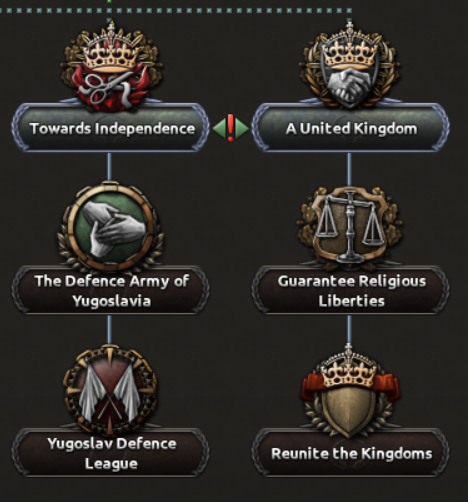
Prince Paul is no longer the blank slate he was in the old Yugoslavia design and trying to keep him in power means attempting to align yourself with the Axis. Just like before though, both Britain and the Yugoslavian military are deeply opposed to an Axis alliance, and attempting to do so may lead to a coup.

However, should the coup fail and Paul remains in power, the regency will hardly be a regency after they rejected the right of the legitimate heir to take the throne, so perhaps a new King will be needed to guide Yugoslavia in its dark future…

Joining the Allies brings its own set of difficulties, besides the distance of your friends in the West. King Peter is a mere 12 years old in 1936 and if you attempt to end the regency too early, you will be saddled with a monarch woefully unprepared for rulership.
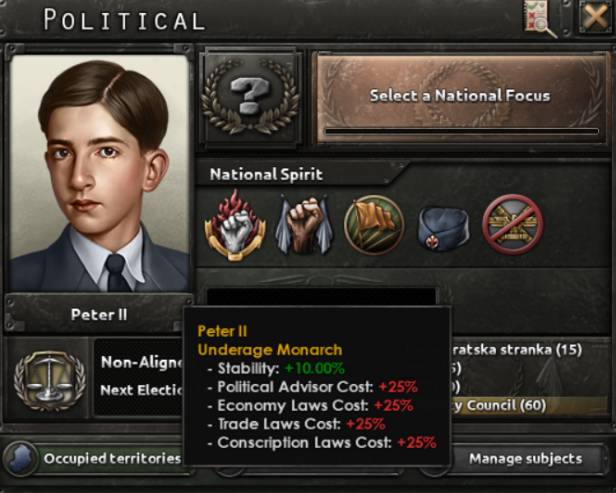
Given a few years however, King Peter matures into the legitimate heir of the Yugoslav throne and may marry himself into a little more than just the Allies.
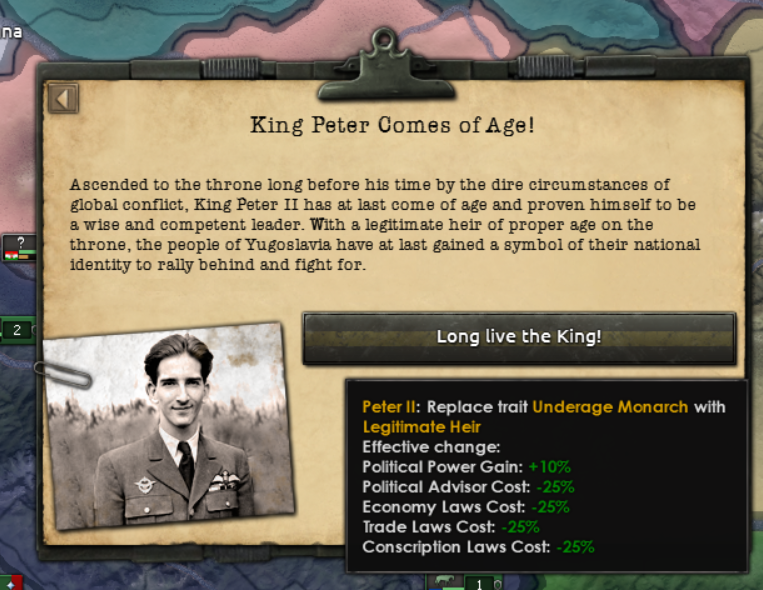
The Royal Wedding focus allows King Peter to marry himself to many of the major Princesses in Europe and who is available adapts dynamically based on the current state of the world. If the Kaiser returns, Yugoslavia will be able to marry a German princess, similarly they may marry a Spanish princess should the Carlists win the Spanish Civil War. Their choice will then inform the outcome of the focus “The Royal Alliance”, which can bring Yugoslavia into a faction with whomever they chose to marry, with Princess Alexandra of Greece resulting in a historic Yugoslav entry to the Allies.

Yugoslavia is not the only Death or Dishonor country getting new content, however. Romania will now have the ability to change sides midway through the war via a decision following a government coup.
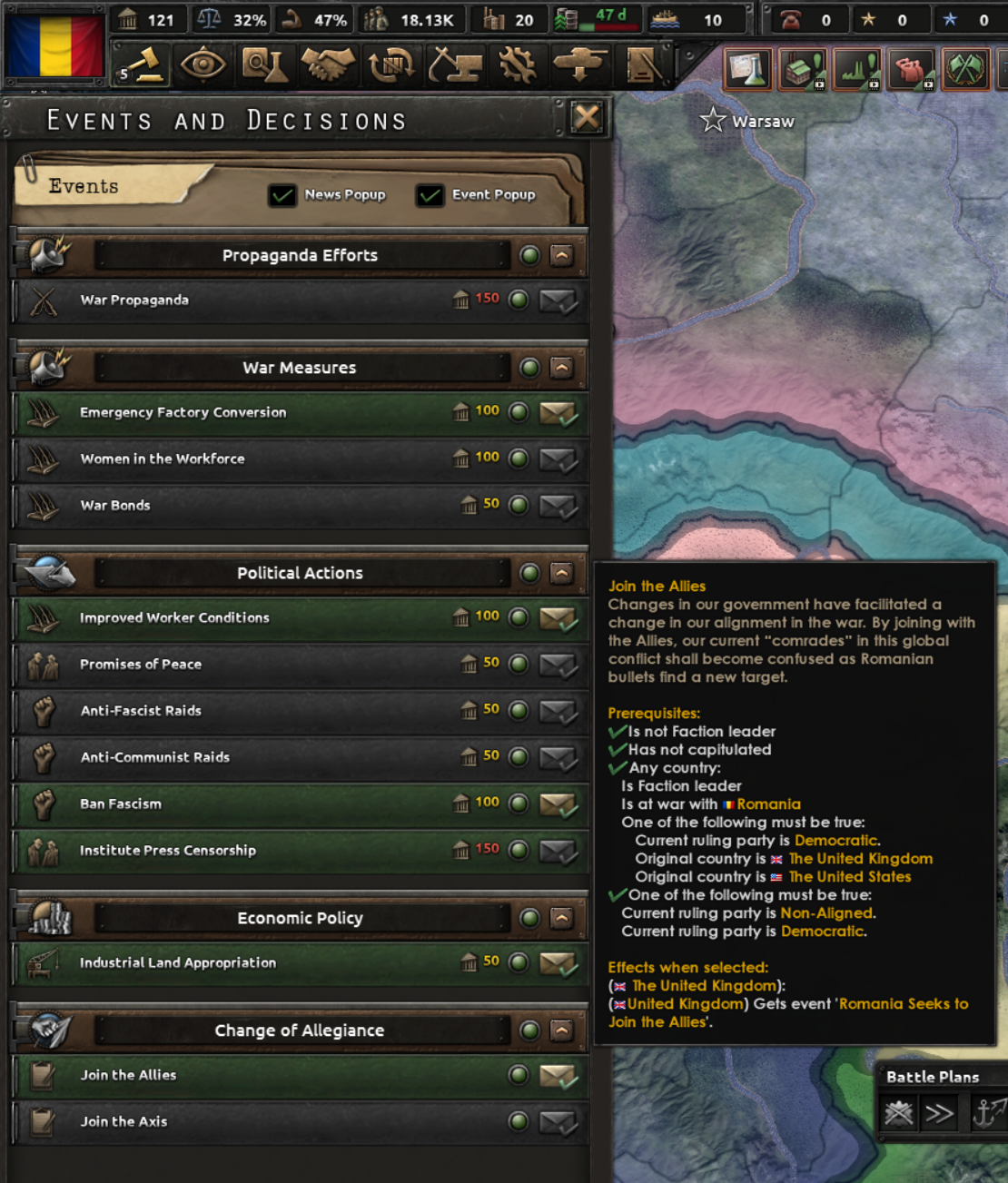
On top of that, the Divide Yugoslavia focus is now a game of bidding and demanding from the powers Romania chooses to invite to the dogpile. Similar to the SCW garrison system, each nation can make up to three bids on a Yugoslav state before being locked in as the controller. When each state is claimed, Romania may push the button and issue their demands to Yugoslavia. This can lead to some… interesting looking Balkans.

There are more changes coming to Romania, but for that I will hand you over to our Producer.
Hi everyone, Vash here with some of the changes I’ve made for Romania. Back in February, one of our forum members, Zeprion, made some suggestions for Romania that we unfortunately couldn’t get to in time for La Resistance. While I still didn’t have the chance to get through the full list, I was able to make a few changes that I’m happy to talk about!
Previously, you may have noticed that the political parties and leaders in 1936 were swapped. Historically, the ruling party in 1936 was Democratic PNL, with Gheorghe Tătărescu as the leader. Armand Calimanescu was also the leader of Non-Aligned FRN. This has now been fixed, and they both have the correct party affiliations. This also means that Romania now starts off in 1936 as Democratic instead of Non-Aligned. We’ve also done some balancing on the back end to account for this change.

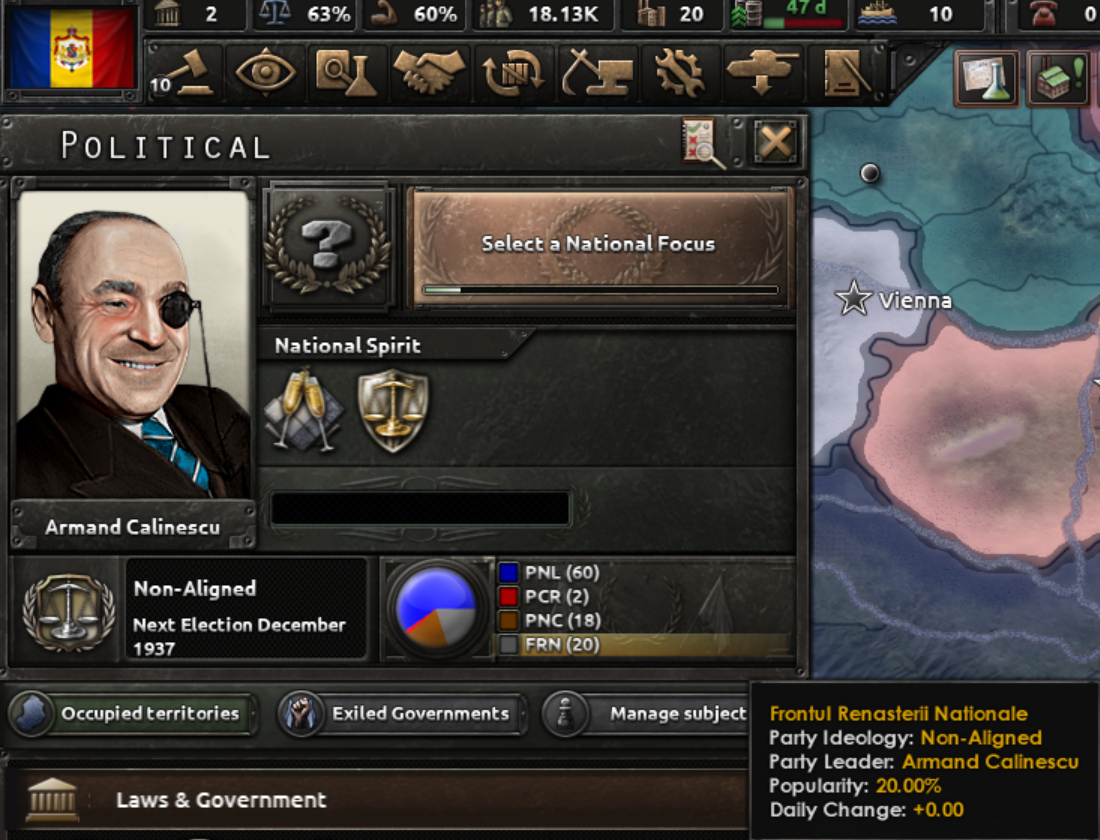
Next up, we also switched the starting fascist leader to Octavian Goga, who was the leader of the National Christian Party (Partidul Național Creștin). That means we’ve also switched the starting fascism party to the PNC.
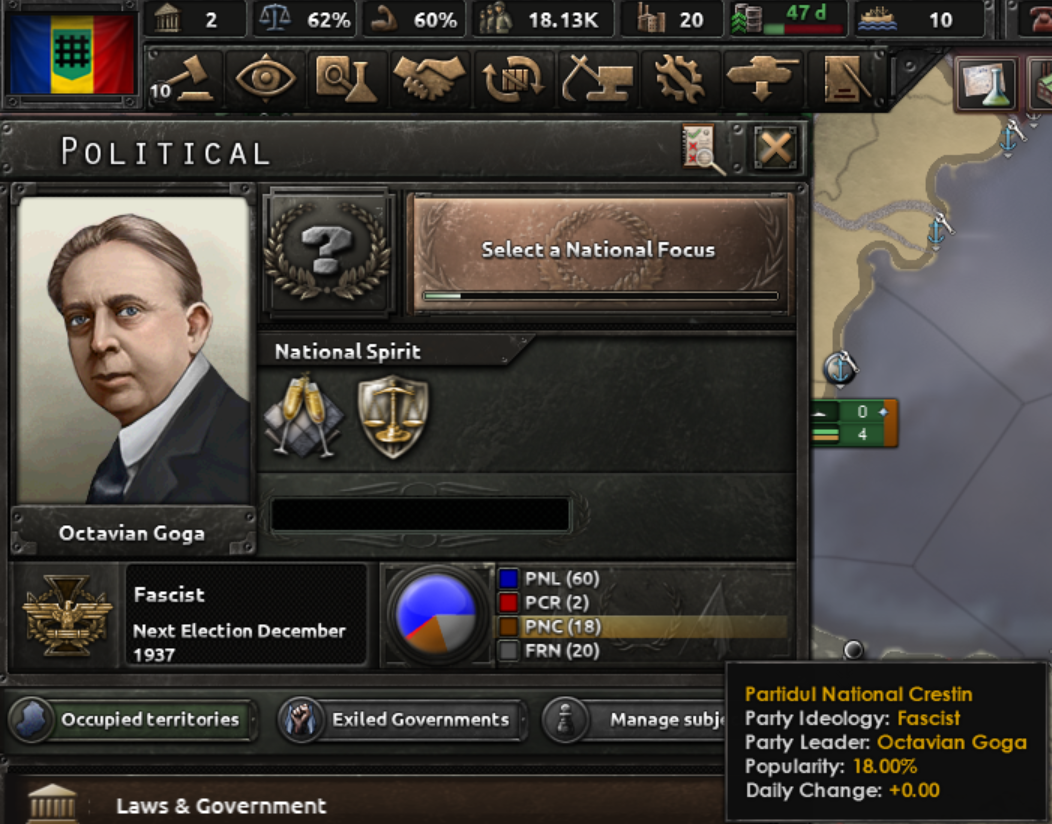
What this means for the player is that upon taking the Iron Guard focus, Ion Antonescu will become the figure head for the fascist party and the party will be renamed from the PNC to Garda de Fier.


Another important historical fact that Zeprion brought up was that King Michael’s Coup was not against his father, but against the fascist Iron Guard. We’ve now relocated this focus to the bottom of the fascist tree.
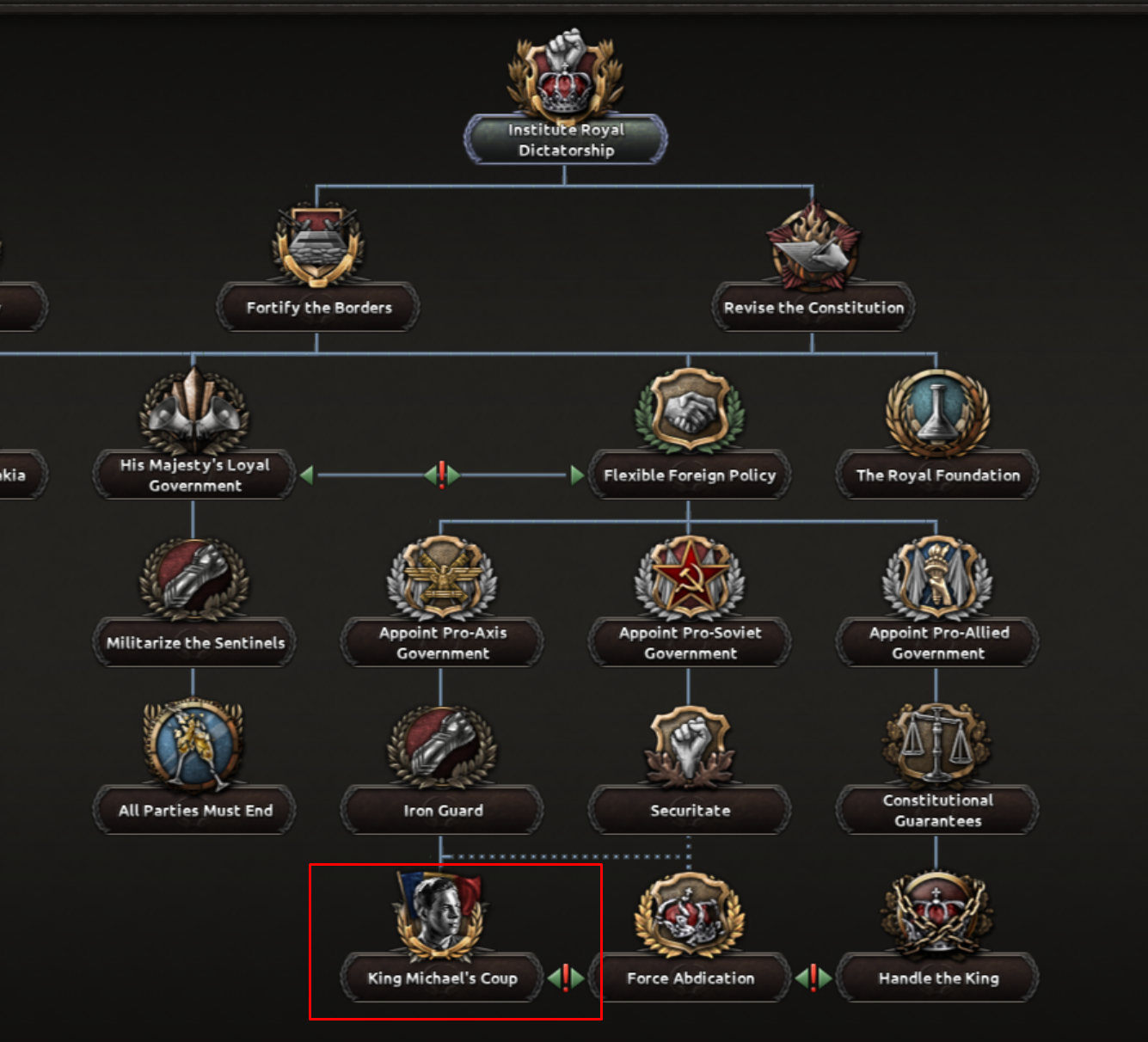
This now gives the player three options to choose from. You can either stage the coup and appoint King Michael as the leader of the Democratic Party under a constitutional monarchy, force King Carol’s abdication and replace him with the leader of the most popular party, or Handle the King and allow King Carol to stay in power since he has changed his ways for the better.
We’ve also updated the state priorities for some of our building focuses to ensure they don’t give infrastructure bonuses to states you may have given up prior to the start of the war such as Bukovina, Bessarabia, and Northern Transylvania.
And last but not least, we’ve given Constantin Sanatescu a bit of an upgrade! Previously he was only available as an Army Chief with a defensive bonus, but he is now available as a General as well.

That’s it for all the Romania changes for now. Thanks again to Zeprion for all the feedback, and I hope everyone enjoyed this week’s Dev Diary!






 #
#

















